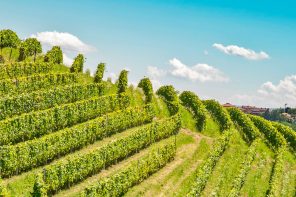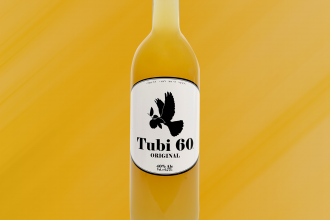If Piedmont wines were a monarchy, Barolo and Barbaresco would sit at the head of the throne. Many of us have heard of these wines, gifted these wines, or have been lucky enough to taste these wines, yet we hardly know anything about them. So what exactly makes these wines so spectacular? The first, and most significant, component of that answer would simply be the grape that composes them: introducing the star of Piedmont, Nebbiolo.
Nebbiolo is a red grape found all across Northern Italy, though its prime examples come from the northwestern region of Piedmont. Known as Nebieul in the local dialect, and thought to have acquired its name from the Italian word for fog (nebbia) which clouds abundantly in the region, this grape is responsible for composing five DOCGs in the region alone: Barolo, Barbaresco, Gattinara, Roero, and Ghemme. Nebbiolo-based wines are known for being tannic when young due to their abundant tannin, though after a few years of age, take on beautiful cherry, tobacco, and violet-herb flavors.
So if they’re made from the same grape, what exactly is the difference between Barolo and Barbaresco? A notable reason for flavor profile difference between the two is the type of soils they grow in. Nebbiolo in Barolo grow in less fertile, mostly sandstone soils, which create a fuller, fatter wine with harsher tannins, and therefore, generate better aging potential. Nebbiolo in Barbaresco grow in more fertile soils and endure a maritime climate, producing a less tannic wine that can be consumed sooner than its Barolo counterpart. Due to the tannin difference between the two, Barolos have longer aging requirements (3 years normally, 5 for Riserva) than Barbarescos (2 years normally, 4 for Riserva.) Nebbiolo in both of these wines present a naturally high acidity and strong tannin structure, therefore pair perfectly with red meats and hard cheeses.
And for those of us with a lower budget and less patient palate? Opt for Nebbiolo Langhe, a softer, easier drinking, and less expensive choice. Nebbiolo Langhes are essentially baby Barolos/Barbarescos, made in the same way as their regal counterparts, just aged less and/or produced from more youthful vines. Although Nebbiolo Langhes won’t age as well as their pricier counterparts, these wines are meant to be enjoyed in their youth and can even be enjoyed slightly chilled. A fun way to discover all that Nebbiolo from Piedmont has to offer is to grab a bottle of each of the three and taste them side by side with a group of friends — this way, you’ll benefit from sharing one another’s tasting notes, company, and the potentially hefty weight of the Barolo bill.








